Britain’s Biggest Alcohol Brands is The Grocer’s annual ranking of the biggest booze brands in the UK by value and volume.
Read our full analysis of what the year has brought for the off-trade alcohol sector here.
This ranking is part of Britain’s Biggest Alcohol Brands 2023. See what the top 100 brands have to say about their performance over the past year
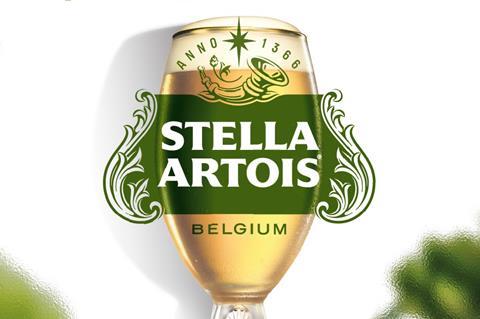
1 (1)
Stella Artois
Sales: £625.1m
Growth: –4.6%
Sales of Britain’s biggest booze brand have fallen off a cliff, to the tune of £29.9m in retail. That’s sixth-biggest absolute loss in this report, driven by 26.6 million fewer litres going through the tills.
Owner Budweiser Brewing Group says the decline is down to unflattering comparisons with 2021, when take-home beer sales were bolstered by the impact of the pandemic.
“The last few years have been like no other,” says BBG off-trade sales director Mark Wingfield-Digby. “As a result of lockdown restrictions, alcohol consumption was driven in-home practically overnight. This led to a boom of sales in the off-trade across the category at an unsustainable rate.”
It’s a fair point. Despite the latest drop in sales, Stella is still up more than £50m on our 2019 report – the last one before Covid-19 hit. That report also covered the beer boom of the 2018 heatwave that coincided with a men’s World Cup – a traditional driver of beer sales.
But the primary cause of the value gain on 2019 is inflation, which has driven up average price per litre for all but 17 of Britain’s top 100 alcohol brands over the past 12 months.
After all, volumes haven’t gone the same way. Stella has mustered volume growth of just 1.8% versus the figures in our 2019 report, despite the record temperatures the UK enjoyed last year. Compared with 2021, volumes are down 9.5%.
That’s against a wider move from the on-trade into retail. Wingfield-Digby says 87% of all drinking occasions now occur at home, as the ongoing cost of living crisis puts a dampener on spend on nights out.
Stella’s lacklustre volumes are partly down to the lack of a major men’s football tournament last summer. Qatar 2022 – sponsored by Stella sister brand Budweiser – was the first World Cup to be held in winter.
Another major reason for Stella’s volume decline is the many people – especially young adults – drinking less or cutting out alcohol altogether. According to Drinkaware, 30% of adults aged under 24 drink less than once a week.
This helps explain the 73.9% spike in value sales of Stella Alcohol Free. Added in spring 2020, it’s now worth £3m.
“The low & no-alcohol category has been going from strength to strength in recent years – now worth £134.4m across the off-trade,” says Wingfield-Digby, citing NIQ data for the year to 13 May.
Read more:
-
The booze brands trying to make the world a better place
-
The year’s biggest risers and fallers
-
The drinks challenging the top 100
“Beer dominates the low & no category, with value share of 2.4% of total beer.”
Still, it’s taken a couple of years for Alcohol Free to reach the £3m mark. That’s small beer compared with the premium Stella Artois Unfiltered, unveiled in February 2022. The line is already worth £25.7m, having racked up a staggering £24.2m in the past 12 months.
“The launch of Stella Artois Unfiltered has been BBG’s biggest-ever new product development,” says Wingfield-Digby.
“It’s taken the category by storm, owning 2.8% market share of the super-premium beer category in the first six months since launch.”
None of that was left to chance, of course. BBG has been spending big on supporting Unfiltered with its ‘Beer au Naturel’ campaign, which involves naked drinkers supping the hazy, 5% abv lager across TV, print and digital.
The brewer has also splashed out on more than 10,000 point of sale displays for Unfiltered to sway drinkers in store.
Unfiltered’s nude drinkers have even been seen in hit video game series The Sims.
This was highlighted when Stella made its first foray into the world of live stream gaming in February. Having produced a downloadable mod pack for the The Sims, it enlisted gamer and YouTuber Devon Bumpkin to run through the game in a live online event on Twitch.
This strategy for the ‘Play au Naturel’ push makes a heck of a lot of sense given how much time younger adults spend gaming online.
Clearly, it’s essential for the long-term prospects of Stella – and, indeed, all brands in this ranking – to convince these people it’s still relevant.
To that end, Stella has been taking further steps. In recent years, it’s invested in NFTs and launched a Palace Artois clothing range in partnership with skate brand Palace.
Most recently, in March 2023, it launched the ‘Table drop’ push for its core lager. The TV ad featured young drinkers sharing Stella over a meal as their table falls through the floor and becomes progressively more crowded.
Given Stella’s 4.6% abv brew has seen value plummet 8.3% and volumes plunge 12.2%, this may be the sort of inventive marketing needed to prevent sales falling further.

2 (2)
Smirnoff
Sales: £598.4m
Growth: +2.1%
Smirnoff has mustered an extra £12.5m on volumes that have slipped just 1%. Against the wider backdrop of declining alcohol sales, this is worth raising a glass to.
“Smirnoff has had a very strong year in the off-trade, growing to reach 42% share of vodka,” says Diageo head of Smirnoff Mark Jarman. “This has been driven by both Smirnoff No.21 and our Smirnoff flavours range.”
In fact, flavoured lines are to thank for the lion’s share of growth. Mango & Passion Fruit Twist and Raspberry Crush, both launched in 2021, and Berry Burst and Cherry Drop, added in October 2022, have delivered £10.7m combined.
Core No.21 vodka, however, contributed a modest £198k. That’s a gain of just 0.04% on volumes down 4.9%. This, and the fact c-store brand Glen’s (23) has had the third-biggest absolute gain of the year, suggests competition is stiffening in vodka.
Of course, Smirnoff is not just about the hard stuff. RTDs are an increasingly important part of its portfolio. Their value has surged 10.5% to £47m on volumes up 4%. The range, which includes Raspberry Crush & Lemonade and Passionfruit Martini, will be a key focus over the summer.
“This year, our focus has been to continue driving the growth of our delicious, bold flavours in summer through targeted through-the-line communications,” says Jarman.
He points to the Women’s World Cup in New Zealand, which will kick off in July, as a significant opportunity. “We’ve capitalised on the World Cup to drive awareness with media placements of our high-performance ‘House of Cocktails’ in key spots.”
Social media’s key to growth, too. “We’re activating bespoke messaging to match the right product to the right moment,” he explains. “For example, we’re supporting Raspberry Crush with multiple messages to suit various occasions.”

3 (3)
Budweiser
Sales: £415.3m
Growth: –10.7%
The year’s been a dud for Bud. It’s down £50m, while retailers have sold 30 million fewer litres – a 14.8% volume decline.
That’s despite splashing out a reported £63m to be the official beer of Qatar 2022 – ahead of which Budweiser Brewing Group ran the “biggest-ever campaign” for its flagship brew.
BBG puts losses down to the inevitable slump after lockdowns, though it’s worth noting the brand’s sales are down on pre-pandemic levels. In our 2019 report, Bud’s value was £462.2m.
The brewer is undaunted. “This year, the Women’s World Cup is taking place in Australia,” says BBG off-trade sales director Mark Wingfield Digby. “As the official sponsor of England’s women’s team, this will be another key moment for Budweiser.”

4 (4)
Gordon’s
Sales: £390.7m
Growth: –15.7%
The post-lockdown era has not been kind to Britain’s biggest gin. Gordon’s has suffered the biggest absolute loss in this year’s report, with sales tanking £72.8m on volumes down 20.5%. This compounds the £81m (15%) decline we reported a year ago – and means Gordon’s is worth £42.3m less than pre-pandemic in 2019.
So, is the gin boom finally and definitively over?
No way, says Hazan Aydin, head of Gordon’s at Diageo. “Gin as a category delivers 17% share of total spirits, with the highest number of consumers and highest penetration in Great Britain,” she says, pointing to the Tropical Passion Fruit and Morello Cherry gins Gordon’s launched in March 2022.
The brand “has continued to tap evolving consumer trends by launching a series of innovations”, she adds.
As is the case with sister brand Smirnoff (2), Gordon’s new flavoured lines have been crucial for the brand in the past year. Those passion fruit and cherry gins, for instance, have both achieved triple-digit value gains and are now worth £13.6m combined.
For how long they will continue to deliver growth is anyone’s guess, though.
After all, Sicilian Lemon, White Peach and Mediterranean Orange launched in 2020 and have contributed most to Gordon’s decline this year, with a combined loss of £42.8m.
Maintaining consumer interest with exciting new flavours and a variety of serves will be vital over the coming year, suggests Aydin.
“We believe there’s a huge opportunity to drive gin cocktails across the on and off-trade,” she says. “We want to inspire drinkers to try simple cocktail serves with gin. The classic G&T serve remains fundamental to the category, but we expect to see gin enjoyed and incorporated into drinks in new and exciting ways.”
The brand will continue to focus on its core London Dry and Pink gins and flavoured offers, as well as its growing range of alcohol-free drinks, which was bolstered in April 2022 with Premium Pink 0.0 Alcohol Free Spirit. That’s now worth £2.1m.
The success of such lines, says Aydin, leaves Gordon’s “proudly holding the majority of share within the alcohol-free spirits segment”.

5 (8)
Hardys
Sales: £305.9m
Growth: +0.9%
Hardys has been on a mission to encourage shoppers to trade up in wine through its ‘good, better, best’ tiering: Stamp, VR and Crest.
An extra £2.7m on volumes down 2% suggests Britain’s biggest wine brand has had some success.
Regular deals on its mid-tier VR lineup – for example, Tesco Clubcard prices of £5.25 per bottle, down from £6 – have narrowed the price gap with the brand’s entry-level Stamp range to as little as 25p a pop.
“We’ve further cemented the brand across all key grocery retailers and impulse, with clear tiering to ensure all shopper needs are met,” says Accolade Wines marketing director Tom Smith.
VR is up 6.4% in value and has delivered 36% of Hardys’ growth, he adds.
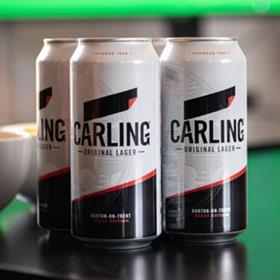
6 (6)
Carling
Sales: £301.8
Growth: –9.1%
Carling’s had £30.2m wiped out in the past year – the fifth-biggest absolute loss in this report – and has still overtaken beleaguered Foster’s (7) to become the third-biggest lager brand in British supermarkets. Talk about relative success.
“At a time when premium and world lager categories are growing at pace, [Carling’s performance] demonstrates the brand’s enduring popularity,” insists Molson Coors off-trade sales director Kevin Fawell.
“Carling has increased its value share of the core lager subcategory to 39% in the past six months, making it a key player in this space.”
This performance is partly down to sponsorship of events such as the women’s FA Cup, suggests Fawell. Being an average of 22p a litre less than Foster’s is another factor.
7 (5)
Foster’s
Sales: £298.2m
Growth: –12.5%
Foster’s was starting to look like the brand time forgot. Barely a peep has been heard since the TV ad of 2019, when Aussie characters Brad and Dan doled out advice on how to deal with “fancy pants” craft beer drinkers.
But now the boys are making a comeback. “Foster’s is benefiting from a £4m investment, which includes TV and digital advertising, strategic partnerships and on-pack promotion,” says Heineken category & commercial strategy director Alexander Wilson. “And Brad and Dan will feature heavily in our marketing this summer.”
Future performance is not all down to marketing, of course. Price is also crucial in standard lager, where key rival Carling (6) is undercutting Foster’s by an average of 22p per litre (11%).
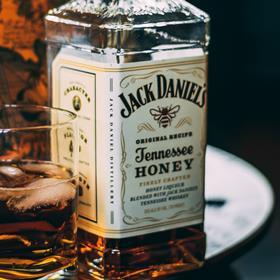
8 (7)
Jack Daniel’s
Sales: £290.9m
Growth: –6.5%
Jack Daniel’s is on the rocks. Sales have declined for the second consecutive year, this time by £20.1m. Volumes have fallen 6.5%.
The biggest contributor to decline is the brand’s core whiskey, which has lost 8.4% (£16.3m). Its Honey and Apple variants contributed a further £7m loss between them.
The news is better for JD’s pricier tipple, twice charcoal-filtered Gentleman Jack. It’s grown value 31.2% on volumes up 41.7%, driven by promotions. It’s on a Tesco Clubcard Price of £20/70cl, down from £35.
RTDs are also flying. Jack & Cola has achieved the fastest value growth in JD’s sprawling portfolio: 10.1%.
That line was replaced by co-branded Jack & Coca-Cola in March, so expect more growth in the year ahead.
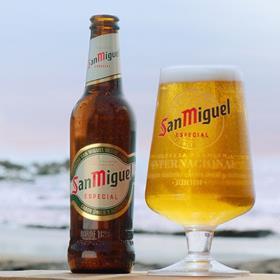
9 (11)
San Miguel
Sales: £257.5m
Growth: +5.3%
San Miguel has leapfrogged Strongbow (10) and Yellow Tail (11) to re-enter the top 10, on growth of £13m. This means half of Britain’s 10 biggest booze brands are now lagers.
“San Miguel’s strong growth over the past year is testament to the excellent quality of the beer coupled with positive consumer awareness,” says John Clements, VP for marketing at Carlsberg Marston’s Brewing Co.
“We have a clear brand strategy for building San Miguel, supercharging the beer over the busy summer period last year – investing in our ‘Find Your Rich’ campaign, which reinforced the value of great experiences enjoyed with friends and family.”
This summer sees the ‘Here’s to the Seekers’ push celebrating people who “live passionately”.
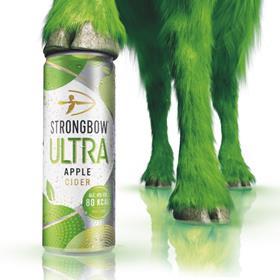
10 (9)
Strongbow
Sales: £255.5m
Growth: –12.1%
While Strongbow’s £35.3m decline is hefty, it’s actually an improvement on last year’s report. Then, it was down £98.6m (25.6%) – the biggest loss of any brand. Its volume decline has slowed, too. The brand is down 16.3% against 2022’s fall of 24.3%.
A key factor behind Strongbow’s recovery is Ultra Dark, the 4% abv cider launched in March 2022. Packed in a slimline can and providing just 95 calories per 330ml serve, it’s already worth £5.2m in retail.
“We have seen huge success following this launch as Ultra has brought a younger and more affluent shopper into cider,” says Alexander Wilson, category & commercial strategy director at Strongbow owner Heineken.
Of Ultra Dark’s total sales, 56.7% have been incremental to the cider category, he adds.
It’s proving such a success that Strongbow last month added Ultra Apple, with 80 calories per can. It’s designed to lure more younger drinkers who would otherwise choose RTDs and spirits this summer.
For both of its Ultra launches. Strongbow ran its ‘GOAT’ campaign featuring a brightly coloured goat – purple for Dark and green for Apple – as an embodiment of the acronym for ‘greatest of all time’.
Strongbow has also been hard at work marketing its core cider, Original, to claw back the £12.9m slump over the past 12 months.
Original was given a modernising makeover in March, swapping the drink’s long-standing black and gold look for a palette intended to catch the discerning eye of younger shoppers.
“Strongbow has a new, stripped-back design featuring the famous archer front and centre, with vibrant pops of colour, to help attract a fresh generation to the much-loved and trusted brand,” Wilson explains.
The revamp’s backed by a £20m investment, which began in April with the tagline ‘Strongbow looks like this now’.
The brand also rolled out a new Tropical variant – a blend of mango and pineapple – into retailers in March, available in a 500ml bottle and 4x440ml multipack of cans.
More launches are in the pipeline for this year, Heineken said at the time.
Looks like Strongbow’s set for a further recovery.
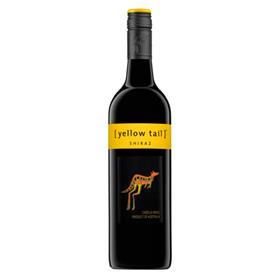
11 (10)
Yellow Tail
Sales: £249.5m
Growth: 1.7%
Yellow Tail, Britain’s second-biggest wine brand, has stayed in the black while keeping the average price per litre more or less flat. It’s seen volumes grow 1.9% – enough to drive a £4.3m gain in grocery.
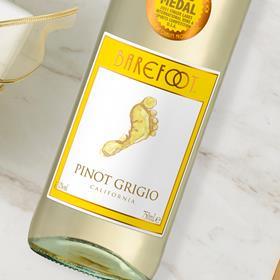
12 (12)
Barefoot
Sales: £235.5m
Growth: –3.2%
Barefoot, which claims to be “the world’s most loved wine brand”, has suffered a second year of value loss. In a bid to reverse the decline, it’s hoping to tap big nights in by pushing its Barefoot on Tap bag in a box.

13 (13)
Corona
Sales: £229.4m
Growth: +0.8%
Corona’s scraped into the black thanks largely to a 6% rise in average price per litre; volumes are down 4.9%. Owner BBG points to the success of alcohol-free Corona Cero, added in January 2022 and worth £5.4m.
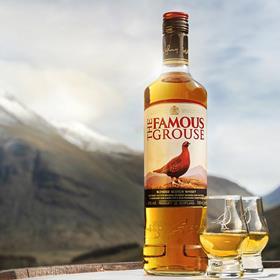
14 (16)
The Famous Grouse
Sales: £208.8m
Growth: –4.7%
The Famous Grouse rolled out two premium blends in 2022: The Famous One and Sherry Cask Finish. But a lack of major listings means they’ve so far had very little impact, leaving the brand down £10.3m.
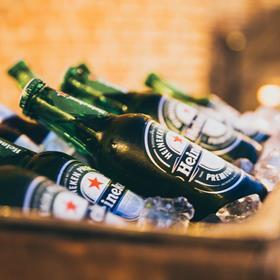
15 (15)
Heineken
Sales: £203.3m
Growth: –8.2%
As posh Continental lagers such as San Miguel (9) and Birra Moretti (16) gain share, Heineken is heading in the opposite direction. It’s lost £18.2m and sold 12.3 million (13.7%) fewer litres.
Part of its problem is that its rivals have wider distribution of smaller multipacks, which are delivering strong growth as shoppers seek to rein in spend. San Miguel and Birra Moretti, for instance, have four-packs in Tesco. Heineken does not.
“Increased demand for smaller packs is a consistent trend as shoppers manage their weekly budgets and look to spend less than £10 per shopping trip on average on beer and cider,” admits Heineken category & commercial director Alexander Wilson. Though he insists Brits are still snapping up smaller Heineken multipacks aplenty.
“We’re seeing the fastest growth in beer and cider in the premium price segment when buying smaller packs.”
A further silver lining for the brand is the performance of Heineken Silver, the 4% abv lager launched in March 2022 – since when it’s made £10.4m and shifted 3.7 million litres.
Heineken’s other spin-off, 0.0, is looking good, too. The alcohol-free lager has achieved value growth of 7.3%.
Says Wilson: “When consumers encounter our beers or ciders, we want there to be alcohol-free options proudly sitting alongside.”
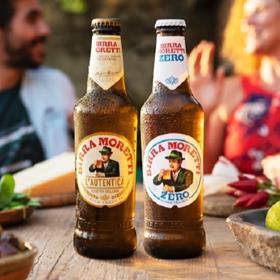
16 (19)
Birra Moretti
Sales: £202.6m
Growth: +6.3%
Birra Moretti’s getting more premium: average price per litre is up 5%. It’s the main driver behind its £12m gain; volumes are up 1.3%. The brand is now urging Brits to ‘Live Italian’ via collectable glassware.
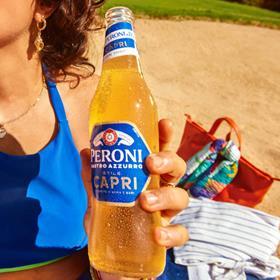
17 (14)
Peroni
Sales: £198.4m
Growth: –11.1%
Peroni this month kicked off a €20m (£17.2m) push for its Stile Capri lager added in March. The aim is to lure drinkers “who want a more informal beer choice” and claw back volumes. They’re down 12%.

18 (18)
McGuigan
Sales: £193.3m
Growth: –4.2%
McGuigan continues its push into low & no – with some success. In Dry January 2023, it reported strong, double-digit growth across its Zero portfolio. Still, overall brand value has decreased £8.5m.
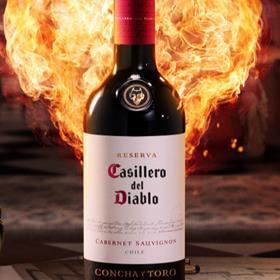
19 (17)
Casillero del Diablo
Sales: £186.2m
Growth: –7.8%
Casillero has shed £15.7m and seen volumes fall 12.4% – driven “by a price repositioning in early 2022”, says owner Concha y Toro UK. “This move was to cement the premium positioning of the brand.”
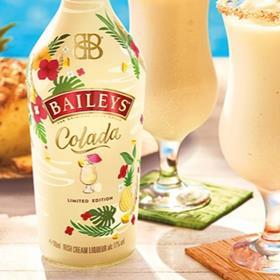
20 (23)
Baileys
Sales: £183.3m
Growth: +5.1%
Baileys isn’t just for Christmas; it’s versatile enough to be enjoyed all year round, insists owner Diageo. Hence the March launch of lower-calorie Deliciously Light and the April return of Baileys Colada.
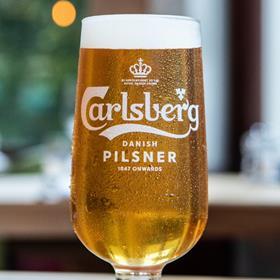
21 (22)
Carlsberg
Sales: £182.1m
Growth: –2.1%
“As demand for premium drinks grows, categories like standard lager have felt the pinch,” says John Clements, Carlsberg Marston’s marketing VP. That’s illustrated by Carlsberg’s 3.7% fall in volumes.
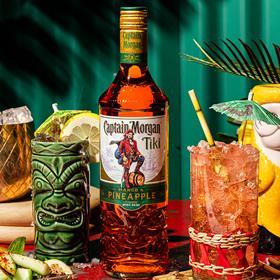
22 (21)
Captain Morgan
Sales: £181.7m
Growth: –3.0%
The UK’s number one rum brand held its position despite a 6.2% drop in volumes. It was supported last summer by its ‘Spice On’ ad push, voiced by Big Zuu, the Bafta-winning presenter, chef and MC.
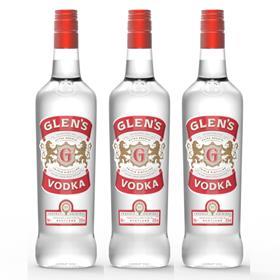
23 (25)
Glen’s
Sales: £179.1m
Growth: +11.3%
C-store mainstay Glen’s has put an extra £18.2m through tills. That’s the greatest absolute gain of any spirit brand in this report – with an average price rise per litre of just 0.7%. Volumes have rocketed 10.5%.
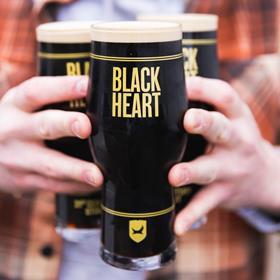
24 (24)
BrewDog
Sales: £167.1m
Growth: +0.3%
After suffering its first value decline in years in 2022, BrewDog’s back in growth – following a predictably eventful 12 months.
Barely recovered from BBC allegations in early 2022 of a toxic working culture – which co-founder James Watt denied – the brewer faced criticism ahead of the men’s World Cup.
After BrewDog drew attention to human rights abuses perpetrated by host nation Qatar, accusations of hypocrisy quickly followed.
The brewer would continue to show World Cup matches in its bars, critics pointed out, and it had just signed a deal to distribute its beer in Qatar.
Watt dismissed those criticisms, too – just in time for BrewDog to be stripped of its B Corp status in December.
The following month, he forked out £500k of his own money to compensate winners of the brand’s disastrous 2021 ‘gold can’ promotion.
Then things got really dark: BrewDog unveiled Black Heart, an elegantly packaged stout intended to give Guinness a run for its money.
Early signs are very encouraging. Black Heart is “already up to 9% share of the stout category”, says head of grocery Stuart Harrison. “It is also bringing in a younger, more affluent shopper.”
And plenty of shoppers are also reaching for the brand’s Lost Lager. The “world’s first carbon negative lager” is BrewDog’s fastest-growing SKU, up 29.3% to £25.4m.
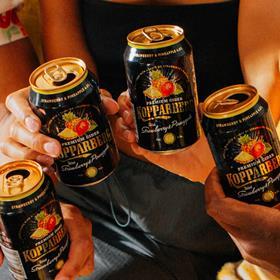
25 (20)
Kopparberg
Sales: £165.0m
Growth: –12.8%
Kopparberg’s sales dropped £24.1m and volumes dived 10.7%. It’s trying to claw back share with new Strawberry & Pineapple and Strawberry & Mango ciders, plus limited-edition labels for the summer.
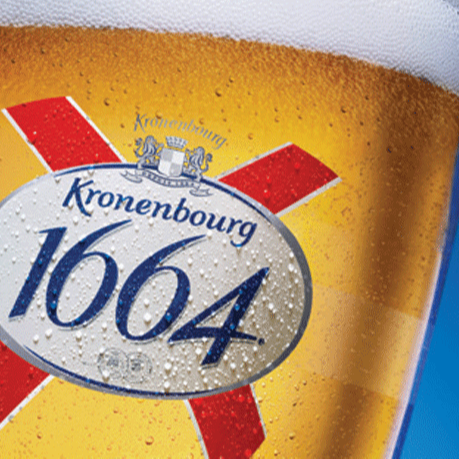
26 (28)
Kronenbourg 1664
Sales: £162.5m
Growth: +11.7%
Kronenbourg’s £17m gain is the fifth-biggest in this report – and the second-largest of any beer brand. It’s now under new control, Carlsberg, having acquired from Heineken all UK rights as of this month.

27 (26)
Thatchers
Sales: £160.0m
Growth: +7.8%
Thatchers bagged an extra £11.6m almost entirely due to price rises of 7%. Its trendy new Blood Orange variant added £19m – more than all other 2022 cider launches combined, says the brand.
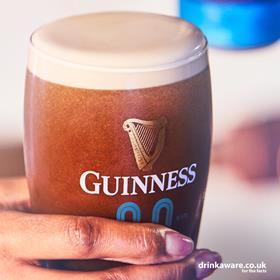
28 (27)
Guinness
Sales: £159.9m
Growth: +9.8%
The stout giant’s up £14.2m – and Guinness 0.0 has been a key driver, says Neil Shah, Diageo’s head of Guinness. The brand is “perfectly placed to tap consumers looking to moderate alcohol consumption”, he adds.
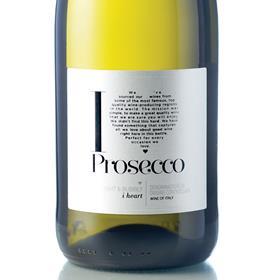
29 (30)
I Heart
Sales: £129.5m
Growth: –0.1%
A 5% rise in average price helped I Heart keep value more or less flat, after volumes dipped 4.8%. Last year saw shopper giveaway ‘Trip of a Lifetime’, backed by activity featuring brand ambassador Rylan Clark.

30 (29)
Bacardí
Sales: £128.2m
Growth: –5.2%
With volumes down 7.8%, Bacardí has worked on luring drinkers with premium and special-edition variants. It launched glow-in-the-dark bottles for Halloween, followed by Caribbean Spiced in April.
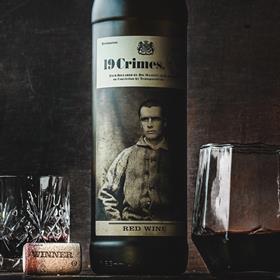
31 (34)
19 Crimes
Sales: £122.2m
Growth: +7.0%
“19 Crimes has gone from strength to strength by recruiting new, younger consumers to the wine category,” says TWE marketing boss Ben Blake, pointing to Red as the brand’s best performer.
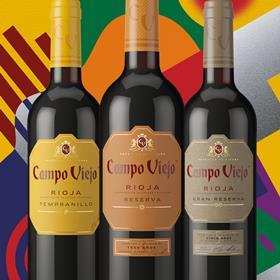
32 (31)
Campo Viejo
Sales: £111.4m
Growth: –11.6%
Like other Spanish wine brands, Campo Viejo has seen volumes tumble. They’re down 14.3%. In response, it unveiled new brand positioning and a push in February, inviting shoppers to ‘Add Some Pasión’.

33 (35)
Freixenet
Sales: £106.8m
Growth: –4.8%
Freixenet lost £5.4m on volumes down 5.2% due to tighter household budgets, says MD Robin Copestick. “Consumers are buying less wine, less often, with this trend being more acute within sparkling.”
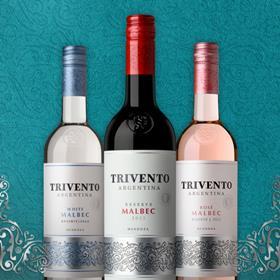
34 (37)
Trivento
Sales: £105.7m
Growth: +9.2%
Trivento has recouped last year’s losses, bringing in an extra £8.9m on volumes up 7.4%. It reports growth across its premium tiers, while demand for its single-serve wine (187ml) format has spiked.
35 (39)
Whyte & Mackay
Sales: £102.3m
Growth: +8.2%
Whyte & Mackay – the cheapest spirit in this year’s top 100 – has gained £7.7m. That’s the fourth biggest absolute gain of any spirit in this report. It’s enough for it to topple Bell’s as Britain’s third-biggest whisky brand.
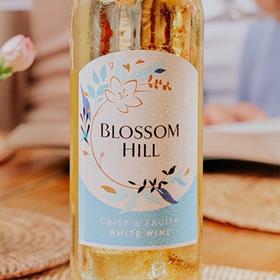
36 (33)
Blossom Hill
Sales: £99.3m
Growth: –13.9%
Blossom Hill has slowed its decline but continues to tumble down the rankings.
That’s in large part due to being overtaken by brands in value growth – most significantly rival wines 19 Crimes (31) and Trivento (34).
And while Blossom Hill’s £16m loss is decidedly smaller than last year’s £46m, it still leaves the brand as the second-biggest loser by absolute value in wine, after Isla Negra (39).
Sales have been hampered as consumers cut back on booze, says Ben Blake, Treasury Wine Estates head of marketing. “Fifty per cent of global wine drinkers are actively limiting their alcohol intake, with one in five are switching to lower-alcohol options,” he explains, citing survey data from Vinitrac [April 2022].
To make matters worse for Blossom Hill, which typically overtrades in impulse, the cost of living crisis has meant shoppers have “cut back on items which they do not deem essential”, such as Californian wine, Blake adds.
And those still putting wine in their baskets are opting for “drier rosé styles” rather than Blossom Hill’s fruitier options.
These trends led to the brand shifting 2.3 million fewer litres.
To turn things around, it’s targeting a “slightly more mature consumer”, teaming up with former Love Island host Laura Whitmore in June 2022 for a 30th anniversary push.
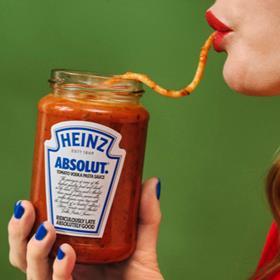
37 (38)
Absolut
Sales: £95.8m
Growth: +0.8%
In February, Absolut touted a redesign and reformulation as the “biggest shake-up since its birth in 1979”. It’s gone on to record a 2.7% rise in volumes and team up with Heinz for a co-branded pasta sauce.
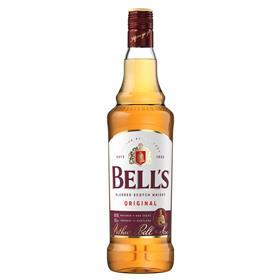
38 (32)
Bell’s
Sales: £95.0m
Growth: –21.5%
A £26m loss for Bell’s is enough for the brand to lose its place as Britain’s third-biggest whisky. It’s been overtaken by Whyte & Mackay (35) after seeing 1.6 million fewer litres of the blended scotch go through tills.
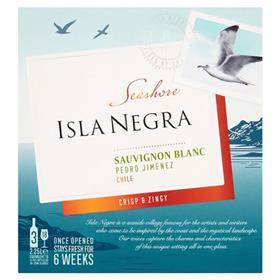
39 (36)
Isla Negra
Sales: £94.1m
Growth: –14.7%
Isla Negra is in freefall, struck by a second consecutive year of double-digit value decline. And despite its stated ambition “to make Isla Negra synonymous with value”, its average price per litre is up 3.7%.
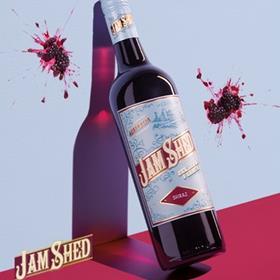
40 (49)
Jam Shed
Sales: £91.9m
Growth: +23.2%
Greater brand awareness is behind Jam Shed’s growth, says Accolade Wines marketing director Tom Smith. He points to last summer’s ‘Shedloads’ push and a focus on NPD – most recently Sparkling Rosé in April.
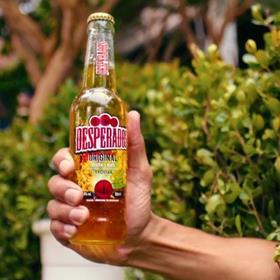
41 (41)
Desperados
Sales: £86.6m
Growth: –5.0%
Desperate times for Heineken’s tequila-flavoured lager brand. Desperados has lost £4.6m, with its core brew accounting for £4.5m. Spin-off variants Red and Nocturno fared no better. Only Exotic Rum made money.
42 (43)
JJ Whitley
Sales: £86.4m
Growth: +0.3%
JJ Whitley’s range boasts a dazzling selection of flavoured variants, with Raspberry Vodka and Pink Gin among the most popular. But plain Artisanal Vodka remains the bestseller, with value of £43.4m.
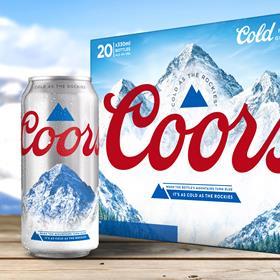
43 (45)
Coors Light
Sales: £84.5m
Growth: +2.2%
Coors Light’s growth is the result of 2021’s multimillion-pound brand refresh, including new pack design and marketing activity with Channel 4, says Molson Coors off-trade sales director Kevin Fawell.
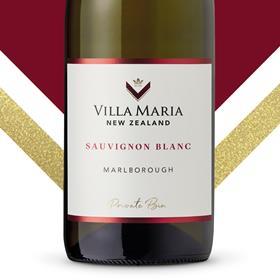
44 (47)
Villa Maria
Sales: £83.1m
Growth: +8.0%
A superior grape harvest allowed Villa Maria “to better balance supply and demand”, says Sarah Szegota, Indevin Group marketing director. In May, the brand launched its ‘Live in the Delicious’ push.
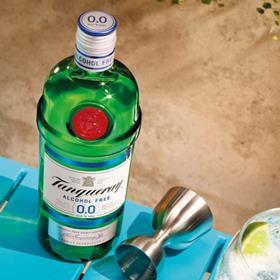
45 (40)
Tanqueray
Sales: £82.8m
Growth: –9.3%
Tanqueray’s value sales slid due to losses for its London Dry Gin (–£5m), Flor de Sevilla (–£2.3m) and Blackcurrant Royale (–£2.4m). Alcohol Free gin fared much better, growing value 18.2%.
46 (51)
Oyster Bay
Sales: £81.1m
Growth: +13.6%
Like rival New Zealand wine brands such as Mud House (64), Oyster Bay has flourished after a strong grape harvest. It allowed the brand to grow volume sales by 17.1%, while average price per litre fell 3%.

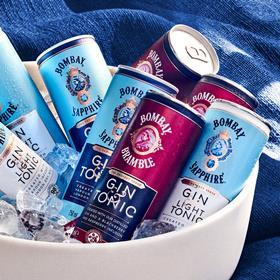
47 (42)
Bombay
Sales: £76.7m
Growth: –13.5%
Bombay’s decline has picked up, its latest £11.9m loss largely due to its core gin, Sapphire, shedding £8.2m. Better news for the brand is its lemon-flavoured Citron Pressé spirit generated £4m in its first year.
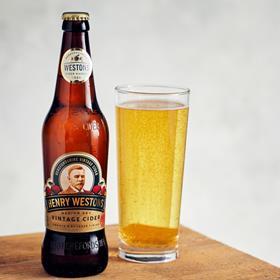
48 (55)
Henry Westons
Sales: £76.1m
Growth: +13.2%
Henry Westons’ sales are soaring thanks to greater demand for craft cider, says Sally McKinnon, head of marketing at Westons Cider.
With household budgets squeezed, the premium brand has shifted an extra two million litres as drinkers seek “affordable luxuries”, she adds. That’s driven an £8.9m gain on an average price per litre of £3.85. For comparison, leading cider brand Strongbow (10) is an average of £2.25.
“As an authentic brand with a real sense of provenance, Henry Westons hits the mark for many shoppers,” McKinnon says. “It provides an opportunity for them to treat themselves to a quality product – and they are prepared to spend a little more.”
Westons has now embarked on a “multimillion” campaign over summer, which includes its “biggest-ever” on-pack promotion with cash prizes. It’s also rolled out its core Henry Westons Vintage in a range of multipack sizes.
“We see the multipack-format Henry Westons products as a clear opportunity to further grow the brand,” McKinnon adds.
Another focus this year will be making packaging more sustainable. “We’ll be removing all cardboard trays, saving around 68 tonnes of cardboard annually,” she says.
“We’ll also be moving away from plastic self-adhesive labels, so that all labels across the range are biodegradable, recyclable and paper-based.”
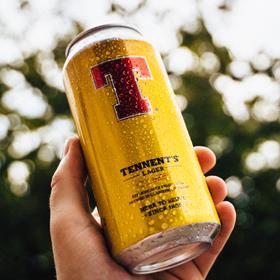
49 (46)
Tennent’s
Sales: £74.0m
Growth: –9.3%
Tennent’s sales continue to fall, having shed almost a fifth of value in 2022’s report. The latest decline was driven by its core beer (–8.4%). Alcohol-free Zero, added in 2020, has finally found its mark, though. It’s up 9%.
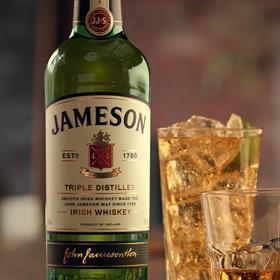
50 (52)
Jameson
Sales: £72.8m
Growth: +5.1%
Jameson’s ‘Widen the Circle’ push returned in early 2023, culminating on St Patrick’s Day. March also saw the launch of digital platform Jameson Connects, offering exclusive events and early access to NPD.
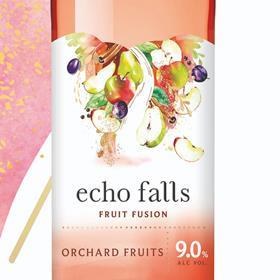
51 (44)
Echo Falls
Sales: £70.5m
Growth: –17.9%
Echo Falls’ loss is due to Brits trading down or exploring other categories, says marketing director Tom Smith. To win them back, the brand is “taking cues from other categories and offering more choice”.
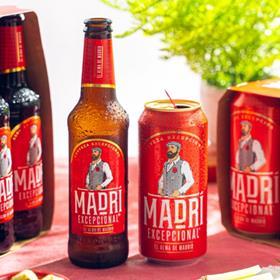
52 (449)
Madrí Excepcional
Sales: £70.1m
Growth: +2,647.8%
Madrí Excepcional is the sales sensation of the year. It has rocketed into the top 100 thanks to the biggest absolute value gain in this report: £67.5m.
That’s enough to place it higher than a handful of established world beers, including Estrella Damm (57) and Staropramen (73).
To a degree, this was to be expected. After Madrí hit the on-trade in autumn 2020, it became the “most successful on-trade alcoholic drinks launch ever”, says Kevin Fawell, off-trade sales director at Molson Coors – which makes Madrí in partnership with Spain’s La Sagra brewery.
Riding the wave of its performance in pubs, 4.6% abv Madrí made its retail debut in February 2022 and launched a £3.5m push five months later.
“The momentum behind the brand made it perfectly placed to help retailers tap the growing world beer category,” Fawell adds.
In April 2023, Madrí kicked off a £4m spend to run for five months. The fast-growing brand will host “city-wide takeovers” this summer, with exclusive music events featuring Spanish and British DJs and performers.
Packs of Madrí and murals in various cities will feature a QR code giving access to Madrí Conectada – a platform that will provide locations of the gigs as well as Madrí stockists.

53 (50)
Gallo Family Vineyards
Sales: £66.5m
Growth: –8.5%
Gallo’s £6.2m loss is markedly less than the £30.5m last year, driven by supply issues in its home of California. However, Gallo’s declines mean it’s been overtaken by New Zealand player Oyster Bay.
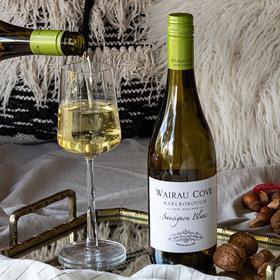
54 (56)
Wairau Cove
Sales: £64.5m
Growth: +1.0%
Wairau Cove’s back in the black, but due only to a 2% rise in average price per litre – driven by the likes of higher shipping costs and a poor yield of sauvignon blanc grapes due to extreme frosts in New Zealand.
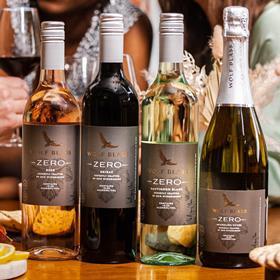
55 (48)
Wolf Blass
Sales: £62.6m
Growth: –16.5%
Wolf Blass has shed another £12.4m. In a bid to reverse its fortunes, it launched limited-edition Fire & Blood Cabernet Shiraz in June 2022. A trendy 0.5% abv range, Wolf Blass Zero, followed last month.
56 (74)
La Vieille Ferme
Sales: £60.8m
Growth: +48.9%
This time last year, French wine brand La Vieille Ferme was cashing in on growing distribution. That growth has since snowballed – it has raked in an extra £20m on the back of a 50% rise in volumes.

57 (53)
Estrella Damm
Sales: £59.5m
Growth: –13.2%
Estrella Damm – down £9.1m on volumes down 13.2% – has been busy working to recoup value, rolling out a four-pack of Damm Lemon to Tesco in March and adding o% abv Free Damm variants including Tostada.
58 (54)
John Smith’s
Sales: £57.8m
Growth: –14.4%
John Smith’s has lost £9.7m. And bizarrely, someone, somewhere, still has its Golden Ale knocking about. Retailers shifted 58 litres, despite the 4% abv brew’s delisting not long after launch in 2015.
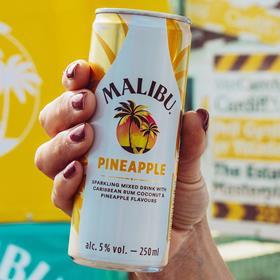
59 (61)
Malibu
Sales: £56.6m
Growth: +0.7%
Holding firm thanks in part to a growing RTD range, Malibu has taken responsible drinking seriously. Last autumn, its #GoodVibesOnly push helped freshers get home safely after a night out via discounted Ubers.

60 (59)
Three Barrels
Sales: £55.4m
Growth: –6.2%
Three Barrels is now grocery’s biggest brandy, having declined at a markedly slower rate than Courvoisier (62). Three Barrels being 52.9% cheaper per litre on average than its rival no doubt played a major role.
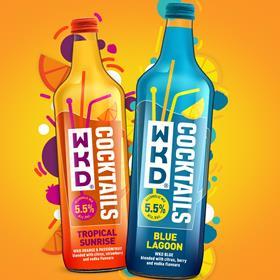
61 (62)
WKD
Sales: £53.7m
Growth: –1.3%
Losses are due to shrinking household spending and more post-Covid on-trade socialising, says SHS Drinks head of brand Alison Gray. New multipacks of cans will drive sales among WKD loyalists, she predicts.
62 (57)
Courvoisier
Sales: £52.1m
Growth: –14.0%
Courvoisier’s sales suffered as retailers focused on cheaper spirits, says Sarah Isaac, brand marketing head at Edrington. To recoup losses, the brand is running a summer push centred on its Gala cocktail recipe.
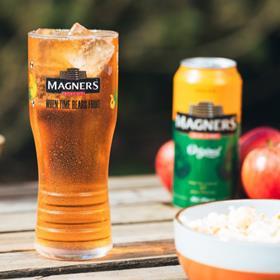
63 (63)
Magners
Sales: £49.4m
Growth: –2.1%
Magners – the flagship brand of troubled C&C Group – has seen a second consecutive year of value decline. Its 5.1% fall in volumes is the equivalent of 1.4 million fewer litres of cider through tills.
64 (77)
Mud House
Sales: £48.5m
Growth: +20.9%
New Zealand’s Mud House has clawed back almost half of the £17.2m it lost in 2022. Its multi-region strategy, including French Sauvignon Blanc added in March 2023, has helped boost brand visibility, it says.
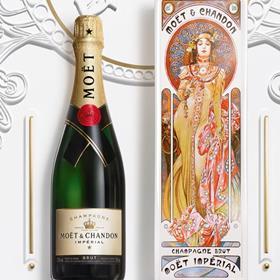
65 (65)
Moët & Chandon
Sales: £47.8m
Growth: –3.7%
The decline of its flagship brand having markedly slowed, champagne powerhouse Moët Hennessy launched World Living Soils Forum in June as a platform to share regenerative agriculture solutions.
66 (60)
Hen
Sales: £47.7m
Growth: –18.7%
The four traditional premium bottled ale brands in the top 100 are hurting, and Hen is hurting most. Value has fallen £11m on volumes down 16.8%, with the core Old Speckled Hen making the biggest loss of £3.7m.
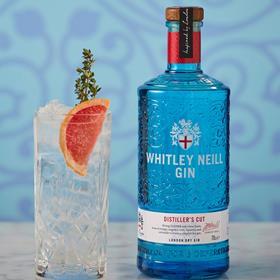
67 (58)
Whitley Neill
Sales: £46.3m
Growth: –22.7%
While the “phenomenal growth” of gin in recent years has clearly subsided, “we still see huge opportunities within the category”, says Whitley Neill owner Halewood Artisanal Spirits.
That’s an optimistic outlook in the face of a £13.6m loss for the brand – the second-biggest for any gin in this report. Only Gordon’s (4) has shed more.
But Halewood remains bullish. “We’re starting to grow our distribution more globally, and certainly see a lot of headroom here,” says a spokeswoman for the supplier.
It’s hoping to reverse category decline with a spate of new products. “We’ve seen strong success with some of our latest flavour innovations,” the spokeswoman says, adding Whitley Neill’s Black Cherry and Pineapple variants were among the bestselling gin NPD for 2022.
The brand also launched a quartet of non-alcoholic lines in October, including Rhubarb & Ginger and Classic Spiced Dry variants.
“More than ever consumers are increasingly mindful of their alcohol consumption,” says the spokeswoman. “It’s important that there are great-tasting alcohol-free products on the market that can cater to this increase in demand.”
That being said, 43% abv London Dry will be a key focus for Whitley Neill in the year ahead. This summer sees £25k of diamonds being given away across 15 bottles, “providing shoppers with an heirloom”.
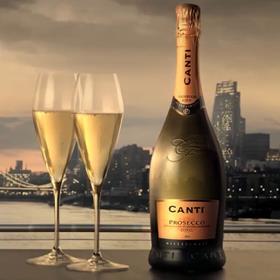
68 (64)
Canti
Sales: £45.1m
Growth: –9.4%
Like sparkling wine rival Freixenet (33), Canti saw value trickle away as household budgets tightened. A 5.7% rise in average price per litre prevented more damage as volumes fell 14.3%.
69 (70)
Buckfast
Sales: £44.6m
Growth: +6.6%
Buckfast, according to a viral Reddit review early this year, is an “ungodly concoction” that tastes “almost like a dead animal”. Shoppers seem to disagree: it’s worth £2.8m more, on volumes up 2.7%.
70 (68)
Johnnie Walker
Sales: £44.2m
Growth: +3.2%
Its value gain entirely price-driven, Johnnie Walker has focused on ‘Bold Steps’, a new programme to open doors for young adults to the creative industries. Its first phase is for people of south Asian heritage.
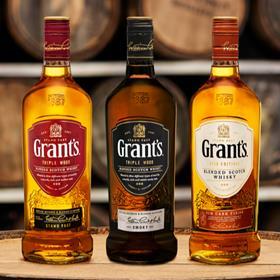
71 (75)
Grant’s
Sales: £43.4m
Growth: +6.5%
Bucking the trend of declines set by pricier blended scotch rivals The Famous Grouse (14) and Bell’s (38), Grant’s brought in an extra £2.6m on volumes up 7.2% – helping it leapfrog bourbon brand Jim Beam (72).
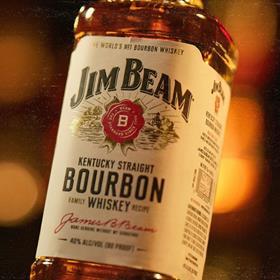
72 (72)
Jim Beam
Sales: £41.6m
Growth: +0.8%
Jim Beam’s more or less flat results are a heck of a recovery after 2022’s double-digit losses. Volumes are 0.5% in the black thanks in part to its fruity lines. It’s just kicked off global push ‘People are good for you’.

73 (80)
Staropramen
Sales: £41.5m
Growth: +8.1%
Staropramen has bagged an extra £3.1m – the sixth-biggest absolute gain by a lager brand.
That was thanks to a 4% hike in average price and a 3.9% increase in volume sales, as the brand benefited from the “popularity of premium world lagers, which have been a big source of growth within the market – accounting for 35% of total lager sales in the off-trade”, says Kevin Fawell, off-trade sales director at owner Molson Coors.
Staropramen has sought to capitalise further on its success with the March rollout of a 0.0% abv version of its Czech pilsner – and a multimillion-pound push for its brand.
That’s already included a partnership in the spring with Everdure by Heston Blumenthal – for an on-pack promotion that offered the opportunity to win a fancy Everdure barbecue and Staropramen-branded BBQ accessories.
It’s also worked with another Michelin-starred chef, Simon Hulstone, to create videos of BBQ ideas for the summer.
Staropramen’s celebrity associations will continue in the second half of this year as it launches an advert featuring new brand ambassador Orlando Bloom, star of the Lord of the Rings movies.
The ad will focus on the beer’s 150-year history and mark the next phase of its ‘Brewed by Experts, for Experts’ activity.
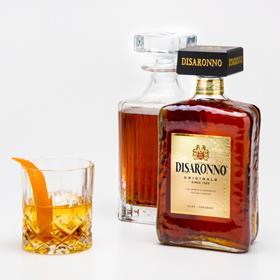
74 (69)
Disaronno
Sales: £39.2m
Growth: –8.4%
Amaretto liqueur Disaronno has shed £3.6m. It’s looking to reverse that by promoting innovative cocktail serves. For the summer months, it suggests a ‘batida’ featuring spin-off Disaronno Velvet.

75 (73)
The Ned
Sales: £39.0m
Growth: –4.9%
The Ned’s decline comes after its “difficult” 2021 harvest “with reduced volumes” – leading to fewer bottles on UK shelves in 2022. There is confidence for a better 2023 performance, thanks to a decent 2022 harvest.
76 (79)
Chekov
Sales: £37.1m
Growth: –5.8%
Chekov is the only vodka in this report to have fallen into the red. It’s lost £2.3m and shed volumes by 12.2%, faster than any rival. It’s also experienced the swiftest rise in average price per litre – up 7.3% to £22.61.
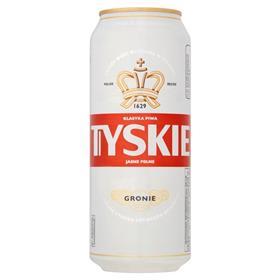
77 (83)
Tyskie
Sales: £36.7m
Growth: –1.8%
Tyskie’s performance was “solid” in a declining lager market, insists Asahi UK category director Andy Wingate. Greater distribution of its four-pack helped, he adds, as well as “a strong price point”.

78 (67)
Brancott Estate
Sales: £36.0m
Growth: –20.1%
The Kiwi wine’s decline has slowed markedly since it rolled out a new look last June. It features a silhouette of a sheep, reflecting how the brand opens its vineyard each year for sheep to pluck leaves off the canopy.
79 (81)
Southern Comfort
Sales: £36.0m
Growth: –4.8%
A 5.7% drop in volumes saw Southern Comfort lose £1.8m, partially mitigated by slightly higher prices. In early 2023, the brand added a limited-edition Mardi Gras bottle designed by graffiti artist John Culshaw.

80 (76)
Calvet
Sales: £34.6m
Growth: –14.4%
Last year, Calvet’s sales were suffering amid a poor French wine harvest. Harvests have since improved – but sales are still struggling somewhat. They’re down £5.8m, driven by a 16.2% fall in volumes.
81 (88)
Lanson
Sales: £34.4m
Growth: –3.0%
With cash-strapped Brits having less to cheer, Lanson’s down £1.1m. In April, it changed the name of its core Le Black Label Brut to Le Black Creation and added a QR code with info about terroir, ageing and the like.
82 (85)
Sharp’s
Sales: £33.0m
Growth: –8.9%
Sharp’s flagship Doom Bar is on stormy waters: volumes have sunk 7.8%. But Kevin Fawell, off-trade sales director at Molson Coors Beverage Co, insists it has outperformed the wider ale category.
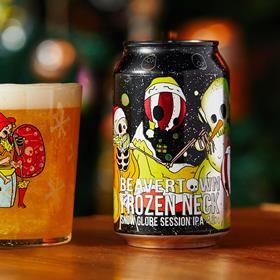
83 (111)
Beavertown
Sales: £32.9m
Growth: +27.8%
Beavertown is booming after being bought out by Heineken last September. An NPD pipeline has included festive Frozen Neck – and now there’s the ‘Destination Planet Summer’ push for Neck Oil.
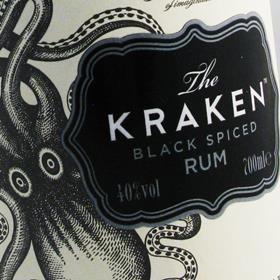
84 (97)
The Kraken
Sales: £32.7m
Growth: +14.2%
The Kraken continues to rush up the top 100, after rising demand for trendy rum helped it grow volumes 13.3% and rake in an extra £4.1m. February saw the launch of a Black Cherry & Madagascan Vanilla variant.

85 (71)
Bud Light
Sales: £32.1m
Growth: –22.5%
Bigots in the US boycotted Bud Light in April after it teamed up with transgender influencer Dylan Mulvaney (right) for a social media push.
The transphobic furore, which included a viral video of musician Kid Rock cackhandedly shooting at Bud Light cans, led to the brand losing almost a quarter of its year-on-year value Stateside.
In the UK, its percentage decline is similar – albeit for reasons free of controversy.
Like many other mass-market lagers, Bud Light has been hit by the post-pandemic slowdown and drinkers shifting to fancier brews. Its volumes are down 23.9%.
Nevertheless, Budweiser Brewing Group has faith Bud Light will bounce back as drinkers choose to stay home.
In fact, “87% of all drinking occasions now occur at home, representing a huge opportunity for retailers to maintain momentum and drive sales”, says BBG off-trade sales director Mark Wingfield-Digby. “We have seen many drinking occasions take place at home, with the big night in being a key occasion, and this isn’t a trend we expect to go away anytime soon.”
This behaviour is driven by habits picked up in the pandemic – and is being reinforced by the economic squeeze, he adds. “The cost of living crisis is hitting people hard. This presents a huge opportunity for the off-trade, as 57% of consumers claim to spend less in the on-trade.”
86 (82)
Hobgoblin
Sales: £32.0m
Growth: –15.3%
Hobgoblin has continued its slide down the ranking on a loss of £5.8m. Volumes have fallen 18.5%. Ruby Ale, which accounts for 46% of the brand’s value, contributed most to the decline, with value down 20%.

87 (91)
Oxford Landing
Sales: £31.9m
Growth: –6.1%
Oxford Landing has climbed the ranking simply by declining slower than rivals Torres (89) and Kumala (94). Last summer, the brand unveiled a new look and poured its wines into lighter bottles and recyclable cartons.
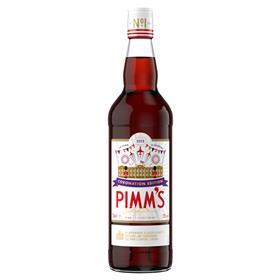
88 (101)
Pimm’s
Sales: £31.9m
Growth: +13.6%
Pimm’s continues “to focus on remaining the drink of choice for summer occasions”, says Charlotte Gibbon, Diageo category marketing director. It’s working: volumes are up 9.3% following last year’s heatwave.
89 (86)
Torres
Sales: £31.5m
Growth: –12.4%
After a modest gain last year, Torres has lost £4.5m on volumes down 15.3%. The Spanish brand’s staying tight-lipped – but rising temperatures have affected Spain’s grape harvests in recent years.
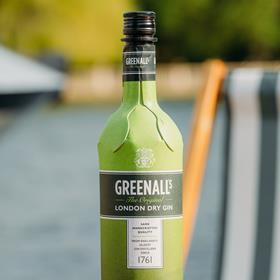
90 (92)
Greenall’s
Sales: £31.4m
Growth: –3.8%
Last July, Greenall’s poured its Original London Dry Gin into a fully recyclable paper bottle. The move, says Quintessential Brands’ chief brand officer Emma Thornton, was “a bold one and the right one”.
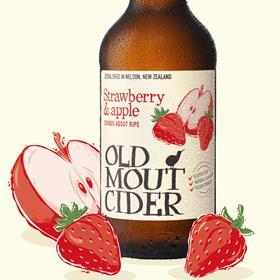
91 (98)
Old Mout
Sales: £30.9m
Growth: +8.2%
A steady flow of exotic new flavours is key to Old Mout’s success. Its aim is “to keep up with current trends and bring new products to consumers”, says Heineken category boss Alexander Wilson.
92 (100)
Red Stripe
Sales: £28.8m
Growth: +2.3%
A 3% rise in average price per litre helped Jamaican lager Red Stripe as it kept volume losses to a minimum at –0.7%. The brand says its 4x440ml pack is “a large driver of growth within the premium beer category”.
93 (89)
Veuve Clicquot
Sales: £28.7m
Growth: –17.4%
Veuve Clicquot turned 250 this year, which it celebrated with a London exhibition featuring works by nine female artists. Less cause for celebration is the champagne brand’s £6m loss on volumes down 19.6%.
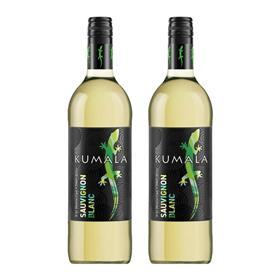
94 (90)
Kumala
Sales: £28.5m
Growth: –16.4%
South African wine’s struggling after lower yields in the country’s 2022 grape crop led to fewer bottles on shelves. Kumala, South Africa’s only representative in the top 100, has seen value shrink £5.6m.
95 (114)
Jura
Sales: £27.6m
Growth: +11.3%
Jura’s debut in the top 100 suggests that, despite the economic downturn, Brits are prepared to splash out for premium drinks at home. The single malt brand is up £2.8m, having grown volumes 8.9%.
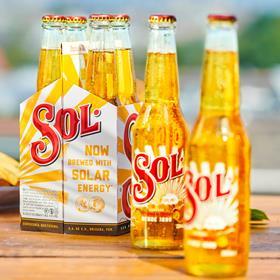
96 (84)
Sol
Sales: £27.5m
Growth: –25.7%
Fittingly, Sol has for the past three years been brewed using power from the sun.
The brand’s Zoeterwoude brewery in the Netherlands is kitted with more than 9,000 solar panels. Of the resulting electricity, 60% is used in the brewing process and 40% in the packaging process.
While significant to parent Heineken’s effort to reduce carbon and become more sustainable – the target is 70% renewable energy in production by 2030 – the planet-positive approach hasn’t translated into growth.
Granted, it’s a tough time for beer as a grocery category. After Brits returned to pubs, off-trade sales have dropped for many mid-market lagers. Sol is no exception. It’s lost £9.5m – and it is the top 100’s fastest faller in percentage terms for the second year running.
A further driver of decline is likely the lack of activity by the brand. Since November 2020, when Heineken gave Sol a refresh to highlight its solar-powered credentials, there’s been little in the way of marketing and NPD.
And it’s significant that – despite Heineken’s research finding 40% of gen Y and gen Z favour low & no beer – an alcohol-free Sol has not yet landed in the UK.
Nor has a lighter variant – even though Heineken also found a quarter of young adults enjoy such brews.
97 (106)
Most Wanted
Sales: £27.4m
Growth: +4.9%
Most Wanted makes its top 100 debut with an extra 3.6% of its bottled, canned and boxed wines sold. Last year, it launched five wines with labels by UK artists including fashion designer Pete Obsolete.
98 (93)
La Gioiosa
Sales: £27.3m
Growth: –10.3%
Prosecco brand La Gioiosa’s volumes are down 10.8%. As price competition stiffens across bubbly, the brand’s key 70cl Brut and Rosé Millesimato lines have been given the Low Everyday Price of £9 at Tesco.
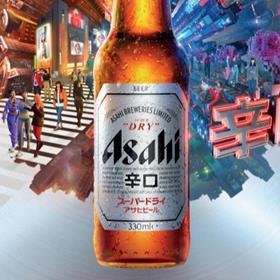
99 (120)
Asahi
Sales: £27.2m
Growth: +17.6%
The Japanese lager – up £4.1m on volumes up 13.4% – is aiming to climb higher after signing its “biggest ever” marketing deal with Manchester City and other global sports teams last August.
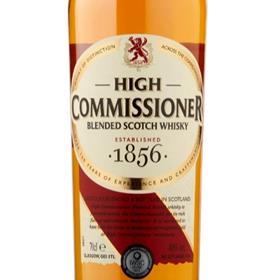
100 (104)
High Commissioner
Sales: £26.4m
Growth: +0.1%
A 3.6% rise in average price allowed High Commissioner to stay in the black and sneak into the top 100. The brand, which counts Iceland as its only major high street retailer, has seen volumes fall 2.9%.
Britain’s Biggest Alcohol Brands 2023: The top 100

Stella might be maintaining its dominance at the top, but 2023 has proved volatile for booze brands
 Currently
reading
Currently
reading
Britain’s Biggest Alcohol Brands 2023: The top 100
- 2
- 3
- 4









![drinks_RGB[48]](https://www.thegrocer.co.uk/Pictures/80x50/2/9/2/297292_drinks_rgb48_667484.jpg)



![drinks_RGB[48]](https://dmrqkbkq8el9i.cloudfront.net/Pictures/80x50/2/9/2/297292_drinks_rgb48_667484.jpg)

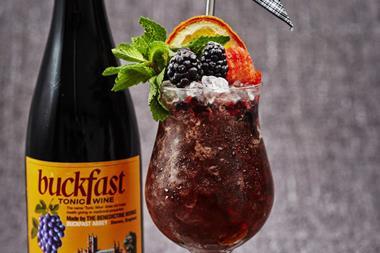

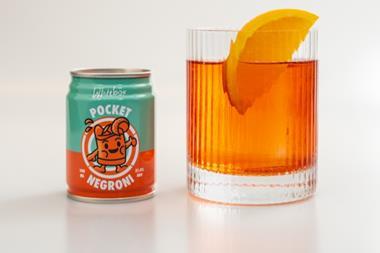



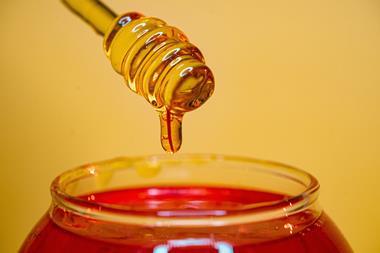
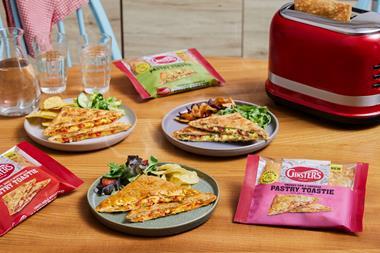

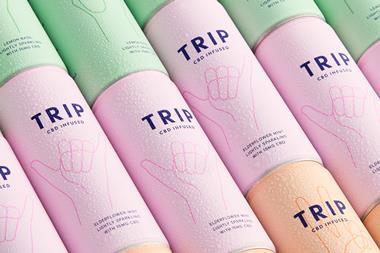
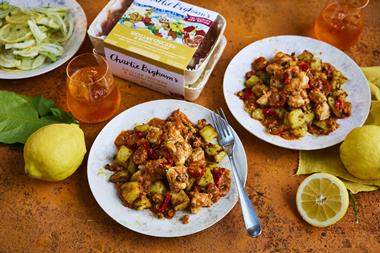
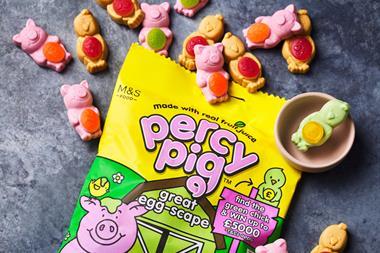
No comments yet